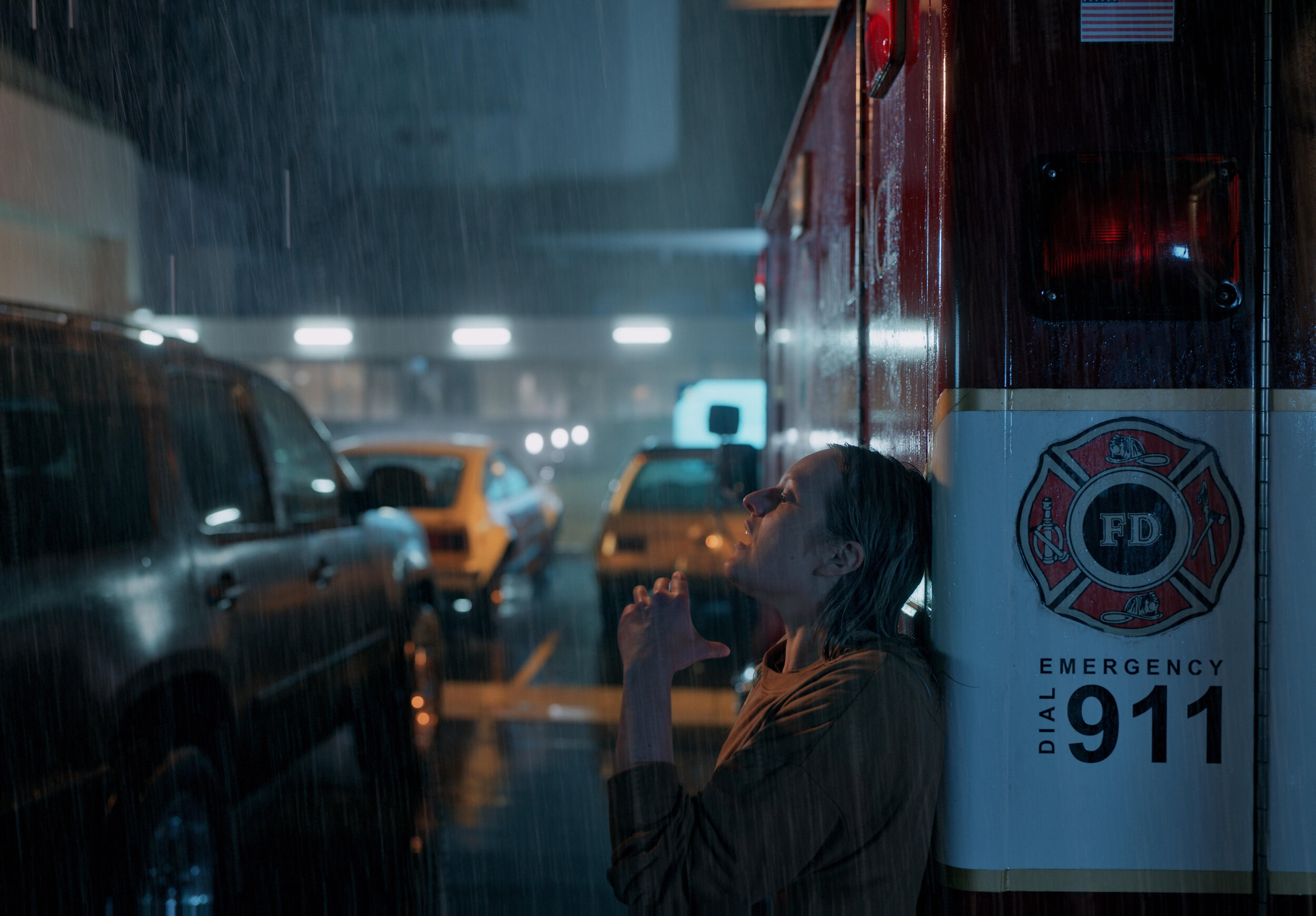
★★★½
Directed by Leigh Whannell
Starring - Elisabeth Moss, Oliver Jackson-Cohen, Aldis Hodge, Storm Reid, Harriet Dyer, Michael Dorman
The Invisible Man (2020)
Written by Dalton Welsh - July 21, 2020“The Invisible Man” a thriller/horror from director Leigh Whannell should be an example that adaptations should not need to follow their source material verbatim. If the creator has a vision for the story, even if not entirely successful, they shouldn’t have to sacrifice that for the appeal of the fans of the original, that version already exists, so why not make something new. The story loosely based on H.G Wells’ original novel follows a revered scientist who after staging his own suicide uses his power to become invisible to stalk and terrorize his ex-girlfriend Cecilia. With greatly effective scenes of tension, a strong lead performance, creative framing in its camerawork and a strong message concerning the effects of domestic abuse, Whannell has added another solid film to his blossoming body of work.
From the opening scene you get a real sense of the mood and dynamics of the film. You are dropped straight in to the story and through the framing of the shots and the body language of lead actress Elisabeth Moss you have a clear understanding of the power dynamic between her and her partner played by Oliver Jackson-Cohen, who although has limited scenes in the film, still brings such a powerful and terrifying energy to his performance. Extra props must be given for it all being communicated non-verbally, which unfortunately bring us to one of the problems of the film, being the dialogue. While not wholly unsuccessful there are several occasions in the film where the dialogue feels a little unrealized or exposition heavy to where it can feel like being talked down to. When compared to the excellent visual storytelling of the opening scene it makes the unpolished dialogue all the more disappointing.
This isn’t to say that the successes of the opening scene are not carried through the rest of the film because they most certainly are. Praise must be given to the films director of photography Stefan Duscio who was more than up to the task of capturing something that can’t be seen. Just by filling the frame with empty space or holding on a shot after our protagonist has left the frame goes a long way to conveying the idea of this ever-present looming threat. In doing so, Duscio effectively puts us into the headspace of Cecilia (Elisabeth Moss) and makes for some of the most effective tension I’ve seen in a film in a long time. However, in the first two acts of the film these scenes can feel a little repetitive, as it is just scene after scene of long stints of quiet with Cecilia tip toeing through the house until she is eventually startled by a loud noise. Thankfully, each scene still has enough to distinguish from the previous that it never results in a feeling of boredom.
The films tone of a psychological horror has also made great use of blending the slow burn style of more classic horror films from the 60’s and 70’s such as Rosemary’s Baby and The Exorcist with the heightened mood of more modern horror films in its sparing moments of high intensity. These more action-oriented scenes accompanied by a loud bombastic score not too dissimilar from some of Hans Zimmer’s work in Blade Runner 2049. While at times it can feel it is edging over the line of being overbearing it is still effective at heightening the action. These scenes in question again elevated by the excellent cinematography of Duscio. The frenetic style as it zips around and follows every movement of the characters on screen adds a truly visceral quality to the scenes, mirroring the camerawork of Whannell’s previous directorial effort ‘Upgrade’. The way this more forceful shooting contrasts the slow movement of the scenes earlier in the film amplifies and strengthens the intent of both styles.
Within these scenes Elisabeth Moss also delivers a great performance as the films lead. While as previously said some of the dialogue can feel a little underdeveloped similar to the character itself whose struggles could have been given a little more context, Moss dedicates herself to the role, generating great sympathy from the viewer. Displaying great emotional intensity, excellently portraying a constant feeling of anxiety. Which brings us to the films overarching theme of the effects of domestic abuse. While this theme is by no means subtle, it never feels in your face about it. The idea of this person looming over Moss’ character even after the abuse has seemingly ended effectively displays how the trauma doesn’t end after the attacker has left the picture. And the way the people around her don’t understand or don’t believe her puts a mirror up to a culture that for the longest time hasn’t taken the psychological trauma of these scenarios seriously, so for that Whannell has succeeded in conveying a timely and important message to film goers.
So, with a strong emotionally intense lead performance from Elisabeth Moss in a film of impressive high-tension thanks in large part to the impeccable framing and camera movement of the films D.O.P Stefan Duscio. Whannell has crafted a tale that makes a great case for taking liberties with adaptations for the purposes of creative intent. While at times the scenes can feel a little repetitive and the dialogue and characterization of our protagonist unpolished. The film is still an important allegory as well as a more direct detailing of the ever-present heartache and anxiety that follows victims of domestic abuse and violence.
